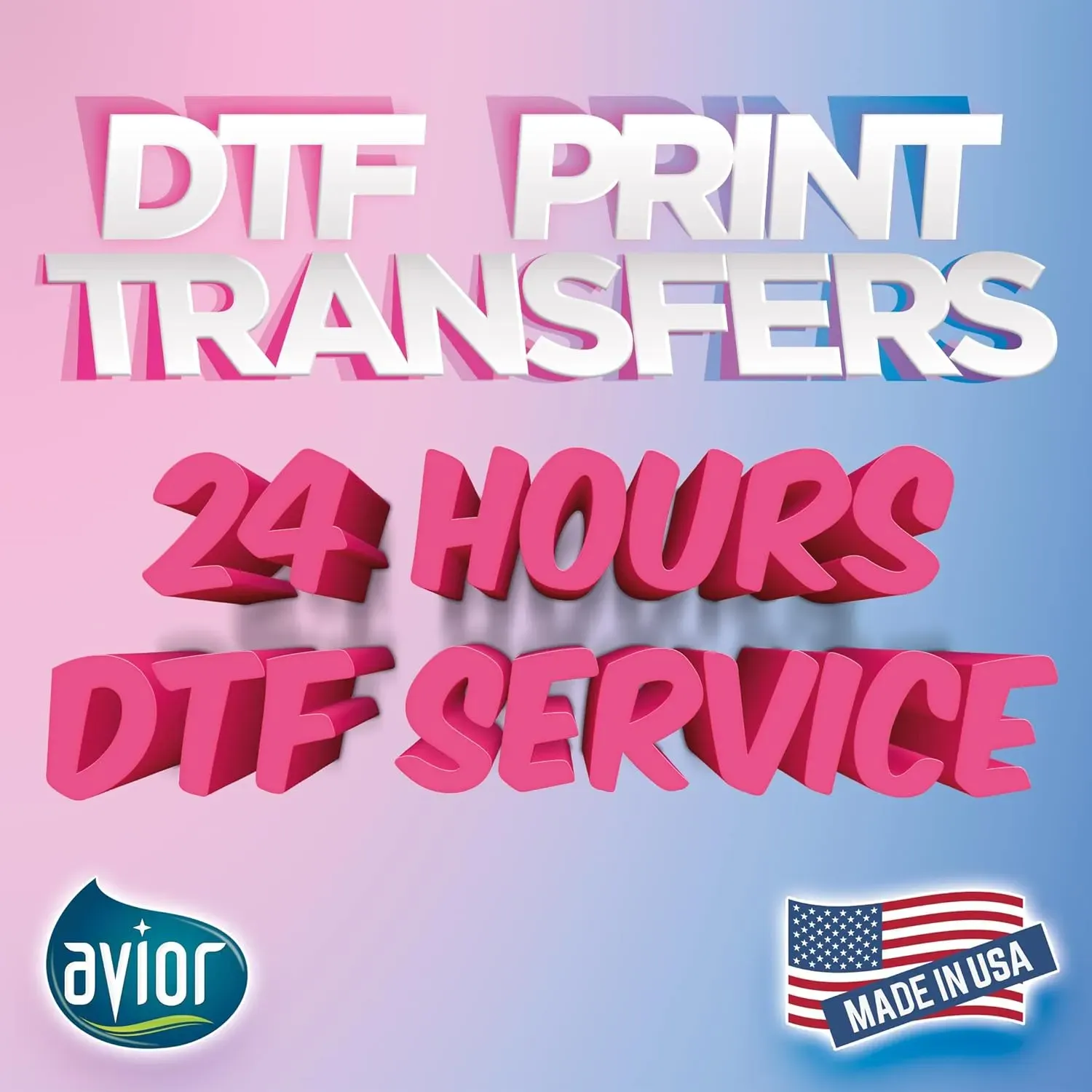DTF transfers have reshaped how designers and hobbyists approach garment decoration, offering vibrant color and a forgiving workflow. As a direct-to-film transfer method, this technology blends bold color reproduction with a streamlined process suitable for small runs and experimentation. Understanding the key materials, the curing process, and how to care for the prints helps maximize durability across fabrics. This overview highlights reliable DTF printing materials and explains how ink quality, film, and adhesive influence longevity. By comparing direct-to-film transfer techniques and best-practice applications, you can achieve professional results that endure wash days and heavy wear.
Viewed through a broader lens, this film-on-fabric method sits alongside traditional decorating options, such as screen printing and heat transfer vinyl. If you’re evaluating options, consider the film-based approach that relies on an adhesive powder and heat to lock designs into textiles. Shifting focus to the materials and process, you’ll encounter considerations such as color fidelity, cure cycles, and fabric compatibility that influence long-term performance. Understanding what makes the technique durable—like ink chemistry, transfer film quality, and press settings—helps planners predict wash resistance and comfort. Whether you’re crafting custom apparel for a small shop or experimenting at home, the right combination of products and technique yields reliable, professional results.
1. Understanding DTF Printing Materials: Choosing Quality for Durable Results
The foundation of a lasting DTF transfer starts with the right DTF printing materials. Key components include the printing film (a clear PET film designed to withstand heat and pressure), CMYK inks with strong colorfastness, adhesive powder for bonding, curing equipment, and reliable release liners. Each element contributes to color accuracy, edge sharpness, and how well the design adheres to a variety of fabrics. Investing in high-quality materials often translates to better durability of DTF transfers over time.
When evaluating DTF printing materials, consider compatibility with your printer, workflow, and target fabrics. A wider color gamut and stable colorfastness help preserve vibrancy through repeated washes, while consistent powder application minimizes edge tearing and powder shedding. By selecting materials recommended by the manufacturer and maintaining clean handling practices, you reduce defects and improve long-term performance.
2. The DTF Curing Process: Steps to Lock Color and Ensure Strong Adhesion
The DTF curing process is where printed designs become bonded, durable images. After printing, adhesive powder is applied to the film and then cured to fuse the color onto the coating, creating a surface that adheres reliably to fabrics. Proper curing reduces powder flaking and ensures the design releases cleanly from the transfer sheet, which directly affects the final adhesion.
Critical parameters include temperature, time, and pressure. Typical ranges run from roughly 120°C to 170°C (248°F to 338°F), with dwell times tuned to the specific powder and film used. Pre-pressing removes moisture and establishes a flat surface, followed by a controlled transfer with even pressure and consistent dwell time. Following the manufacturer’s guidelines for your materials helps prevent under-curing or over-curing, both of which can compromise color and bond.
3. Caring for DTF Transfers: How to Preserve Color and Bond Through Laundering
Care for DTF transfers starts immediately after application and extends through every wash. Proper handling, gentle laundering, and mindful drying help preserve color fidelity and adhesive strength over time. Implementing a solid care routine protects the investment in your designs and keeps edges crisp across wear cycles.
Best practices include turning garments inside out before washing, using cold to warm water with a mild detergent, and avoiding high-heat drying. Allow the print to cure fully before laundering, and consider a test wash after 24 hours to gauge durability. By following care guidelines, you help maintain the vibrancy and bond of the transfer, extending its life on a variety of fabrics.
4. Direct-to-Film Transfer Techniques: Comparing Methods for Best Fit
Direct-to-film transfer techniques cover a spectrum of garment decoration options. DTF transfers can be favored for quick setup on short runs and easy color changes, while still delivering durable prints when properly cured. This contrasts with other methods like screen printing, heat transfer vinyl (HTV), and sublimation, each offering different hand feels and performance characteristics.
Understanding these differences helps designers choose the right approach for a given project and fabric type. DTF transfers often provide a softer hand feel and strong color fidelity on many fabrics, while sublimation excels on synthetic materials but may require light-colored garments. By weighing fabric compatibility, color demands, and production cadence, you can select the most suitable direct-to-film transfer technique for each application.
5. Maximizing Durability of DTF Transfers: Material Choice, Cure, and Fabric Compatibility
Maximizing durability of DTF transfers starts with selecting the right combination of materials and substrates. Fabric type and fiber content influence how a transfer performs; 100% cotton and cotton blends generally respond well, while polyester blends or darker fabrics may need adjusted settings or primers. The durability of DTF transfers is enhanced by high-quality inks and films that maintain color and edge definition over time.
Achieving long-lasting results also hinges on the curing and bonding process, as well as careful care. Proper curing and pressing create a robust bond with textile fibers, while compatible fabrics reduce the risk of cracking or delamination. Coupled with appropriate laundering and avoidance of aggressive washing conditions, these factors help the transfer withstand repeated wear and washing cycles.
6. Practical Tips for Successful DTF Transfers: Pre-Press, Press Parameters, and Quality Control
Practical success with DTF transfers begins with meticulous pre-press, accurate heat-press settings, and consistent handling. Pre-pressing removes moisture and creates a clean, flat surface, while stable temperature and even pressure ensure uniform adhesion across the design. Following recommended dwell times and allowing sufficient cooling helps prevent edge lifting and color shifting.
Ongoing quality control helps catch issues early. Verify alignment before pressing, perform a test cure on a scrap piece when trying new materials, and monitor temperatures and pressures throughout production. Keep records of material batches and settings to reproduce reliable results, and be prepared to troubleshoot common problems like under-curing, over-curing, or uneven adhesion that can affect the durability of DTF transfers.
Frequently Asked Questions
What are the essential DTF printing materials for durable DTF transfers?
Key DTF printing materials include a clear PET printing film, CMYK inks designed for DTF, adhesive powder, curing equipment, and transfer sheets with a release liner. The quality of each component influences color accuracy, edge definition, and, ultimately, the durability of DTF transfers across fabrics.
How does the DTF curing process affect the longevity of DTF transfers?
The DTF curing process fuses the adhesive and sets the ink on the film, creating a durable bond to the garment. Use recommended temperatures, times, and pressure; under-curing can cause poor adhesion and edge cracking, while over-curing can dull colors.
What factors influence the durability of DTF transfers across different fabrics?
Durability across fabrics depends on fabric type, ink and film quality, curing and pressing settings, and proper post-transfer care. Higher-quality DTF printing materials and correct curing parameters help maintain color fidelity and edge integrity over many washes.
What care for DTF transfers steps help maintain the look and longevity of your prints?
Care for DTF transfers includes turning garments inside out, washing cold to warm with a mild detergent, and avoiding high heat during drying. Allow the print to cure fully after transfer, and follow fabric-specific care guidelines to maximize longevity.
How do direct-to-film transfer techniques compare to other methods in terms of durability and application?
Direct-to-film transfer techniques often deliver a soft hand feel, strong color fidelity, and durable adhesion when properly cured. They can offer faster setup for small runs compared with screen printing, while HTV and sublimation have different trade-offs depending on fabric type and color.
What common issues affect the durability of DTF transfers and how can I troubleshoot them?
Common issues affecting the durability of DTF transfers include under-curing, over-curing, and uneven pressure across the design. Troubleshooting steps include ensuring consistent heat, pressure, and dwell times, using compatible materials for your fabric, and validating proper pre-press and post-press care.
| Key Point | Summary |
|---|---|
| What are DTF transfers? | A method where a design is printed onto a special film, coated with an adhesive powder, cured, and transferred to fabric; results in a vibrant, soft feel image with broad fabric compatibility. |
| Materials for DTF transfers | Printing film, inks, adhesive powder, curing equipment, and transfer sheets with release liner; material quality drives color accuracy, edge clarity, adhesion, and durability. |
| The curing process | Curing sets the powder and fuses color to the film, enabling durable adhesion to fabric. Typical temperatures range from 120 C to 170 C with dwell times varying by material; follow manufacturer guidelines and ensure even pressure and a pre press to remove moisture. |
| Longevity and durability | Durability is influenced by fabric type, ink and film quality, proper curing and pressing, and care. Well-applied transfers can retain color and detail through many wash cycles across fabrics. |
| Maximizing longevity | Focus on proper application, post press care, and routine maintenance: clean and dry fabrics before transfer, stable heat press with even pressure, and follow care instructions to preserve color depth and edge integrity. |
| Direct to film transfer techniques quick comparison | DTF sits among methods like screen printing, HTV, and sublimation. DTF can offer quicker setup for short runs and easier color changes, with a soft hand feel and strong color fidelity; differences depend on fabric type and process. |
| Common pitfalls and troubleshooting | Watch for under curings leading to weak adhesion, over curing causing color shifts, and uneven pressure causing edge issues. Maintain consistent heat, pressure, and dwell times and use compatible materials for the fabric. |
Summary
DTF transfers offer a compelling blend of vibrant color reproduction and a forgiving workflow suitable for both hobbyists and professionals. By selecting high quality DTF printing materials, following proper curing procedures, and adopting best practices for garment care, you can maximize longevity and achieve durable results across a wide range of fabrics. Understanding the interplay between materials, curing, and fabric compatibility helps explain why some projects last longer, and applying these principles ensures your DTF transfers stay vibrant wash after wash. Whether you’re producing small batches or scaling up, this guidance highlights practical tips to optimize performance and longevity of DTF transfers.



